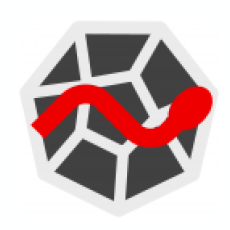Compare Products

|

|
Features *Menu Bar
The File menu has options for Test Case and Test Suite (suite of Test Cases). Using these you can add a new Test Case, open a Test Case, save a Test Case, export Test Case in a language of your choice. You can also open the recent Test Case. All these options are also available for Test Suite.
*Toolbar
The toolbar contains buttons for controlling the execution of your test cases, including a step feature for debugging your test cases. The right-most button, the one with the red-dot, is the record button.
*Test Case Pane
Your script is displayed in the test case pane. It has two tabs, one for displaying the command and their parameters in a readable “table” format.
*Log/Reference/UI-Element/Rollup Pane
The bottom pane is used for four different functions–Log, Reference, UI-Element, and Rollup–depending on which tab is selected.
*Building Test Cases
There are three primary methods for developing test cases. Frequently, a test developer will require all three techniques.
*Running Test Cases
The IDE allows many options for running your test case. You can run a test case all at once, stop and start it, run it one line at a time, run a single command you are currently developing, and you can do a batch run of an entire test suite. Execution of test cases is very flexible in the IDE.
*Using Base URL to Run Test Cases in Different Domains
The Base URL field at the top of the Selenium-IDE window is very useful for allowing test cases to be run across different domains. Suppose that a site named http://news.portal.com had an in-house beta site named http://beta.news.portal.com. Any test cases for these sites that begin with an open statement should specify a relative URL as the argument to open rather than an absolute URL (one starting with a protocol such as http: or https:). Selenium-IDE will then create an absolute URL by appending the open command’s argument onto the end of the value of Base URL.
*Selenium Commands – “Selenese”
Selenium commands, often called selenese, are the set of commands that run your tests. A sequence of these commands is a test script. Here we explain those commands in detail, and we present the many choices you have in testing your web application when using Selenium.
*Script Syntax
Selenium commands are simple, they consist of the command and two parameters
*Test Suites
A test suite is a collection of tests. Often one will run all the tests in a test suite as one continuous batch-job.
* open - opens a page using a URL.
|
Features * Editor: Multi-language editor with function/class browser, code analysis features (pyflakes and pylint are currently supported), code completion, horizontal and vertical splitting, and goto definition.
* Interactive Console: Python or IPython consoles with workspace and debugging support to instantly evaluate the code written in the Editor. It also comes with Matplotlib figures integration.
* Documentation Viewer: Show documentation for any class or function call made either in the Editor or a Console.
* Variable Explorer: Explore variables created during the execution of a file. Editing them is also possible with several GUI based editors, like a dictionary and Numpy array ones.
* Find in Files: Supporting regular expressions and mercurial repositories.
* File Explorer: The file explorer pane is a file/directory browser allowing the user to open files with the internal editor or with the appropriate application (Windows only).
* History Log: The history log plugin collects command histories of Python/IPython interpreters or command windows.
|
LanguagesJava Perl Python Java Script Objective C Ruby Other |
LanguagesC Python |
Source TypeOpen
|
Source TypeOpen
|
License TypeApache |
License TypeMIT |
OS Type |
OS Type |
Pricing
|
Pricing
|
X
Compare Products
Select up to three two products to compare by clicking on the compare icon () of each product.
{{compareToolModel.Error}}Now comparing:
{{product.ProductName | createSubstring:25}} X